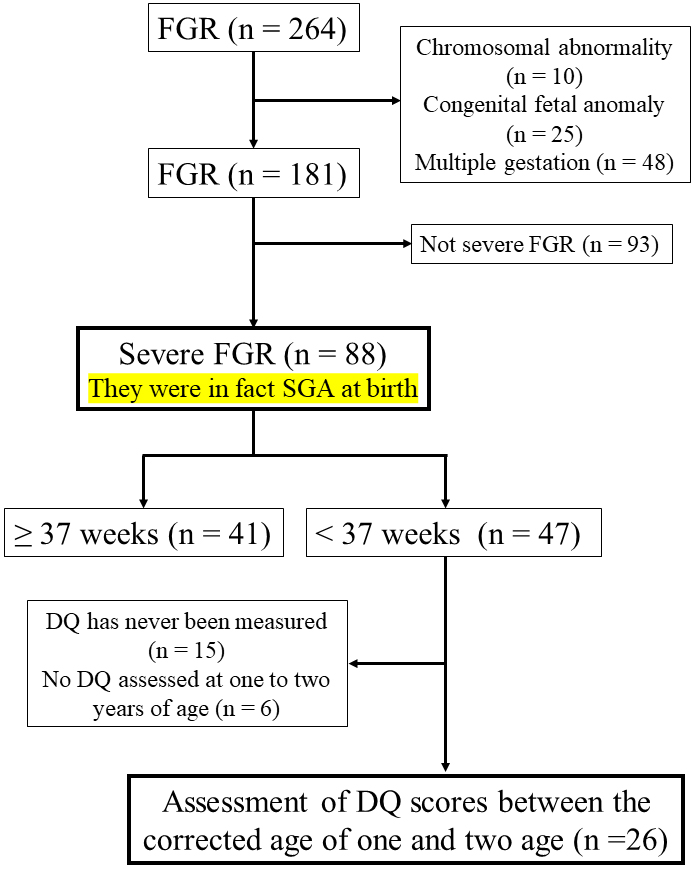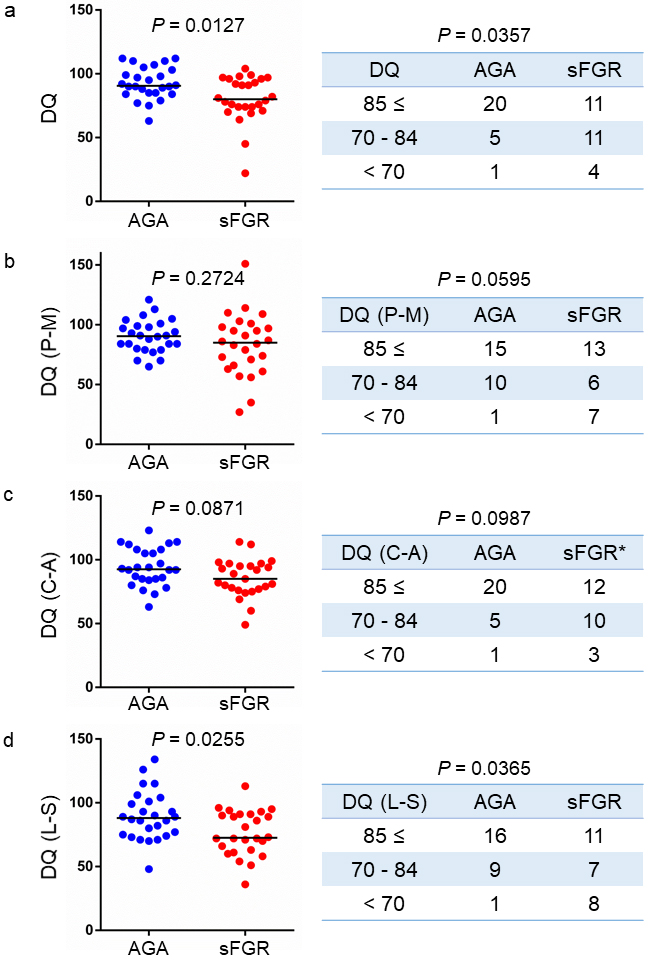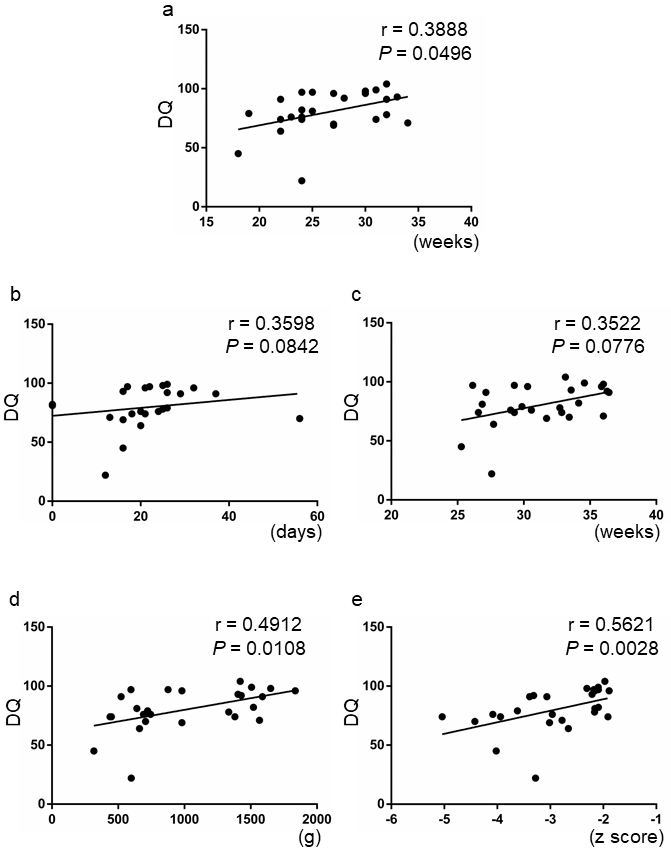Figure 1. Flow diagram of patients included in the study.
Fetal growth restriction (FGR) was defined as follows: the estimated body weight in utero by ultrasonic measurement and the actual body weight at birth based on the birth size standards by gestational age for Japanese neonates are below the 10th percentile (−1.28 SD).
Severe FGR was defined as follows: the estimated body weight in utero by ultrasonic measurement and the actual body weight at birth are both below the 3rd percentile (−1.88 SD).
Small for gestational age (SGA) was defined as follows: the body weight at birth is below the 10th percentile.
DQ: developmental quotient.
From: Clinical Features of Neurodevelopmental Outcomes in Children with Preterm Severe Fetal Growth Restriction: A Retrospective Observational Study



